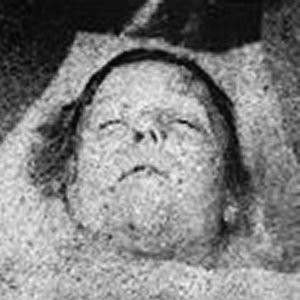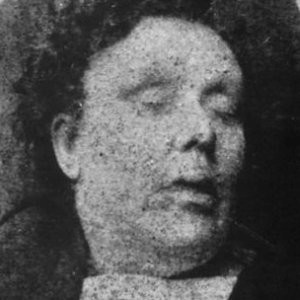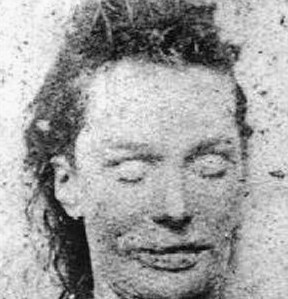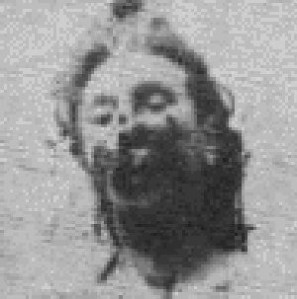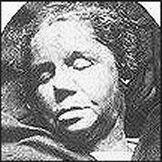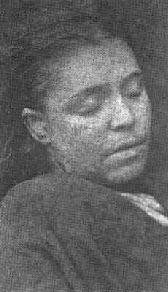The Whitechapel district, around the East End of London, was known to be the most notorious slum in London during the Victorian era, where poverty and homelessness, drunkenness and prostitution were a common way of life, until eleven unsolved serial murders changed the area.
Between 3 April 1888 and 13 February 1891, eleven women, all living in the Whitechapel district, were brutally murdered, with the crimes becoming known as the ‘Whitechapel Murders’, and during this time there was widespread panic among the citizens of London.
The attacks are thought to have been committed by the killer, later nicknamed, ‘Jack the Ripper’, although many theories have suggested the killer be that of a female.
There was much debate at the time, and since the murders, as to all eleven women having been murdered by the same person, a debate that will undoubtedly continue through further centuries.
Various organisations were involved in the hunt for the killer/s, but although extensive inquiries were conducted, with numerous suspects arrested, the perpetrator has never been caught, and the majority of original paperwork has since gone missing.
Out of the eleven women killed, most were identified as prostitutes:
Emma Elizabeth Smith
Martha Tabram
Mary Ann Nichols
Annie Chapman
Elizabeth Stride
Catherine Eddowes
Mary Jane Kelly
Rose Mylett
Alice McKenzie
Frances Coles
Unidentified
EMMA ELIZABETH SMITH:
In the early hours of the morning, prostitute Emma Elizabeth Smith, was brutally assaulted and robbed on Tuesday 3rd April 1888 in Whitechapel at the junction of Osborn Street and Brick Lane.
Smith managed to walk back to her lodging house at 18 George Street, Spitalfields and informed Mary Russel, the deputy keeper, of her ordeal, explaining her attackers were two or three men with one of them being a youth.
Mrs Russell took Smith to the London Hospital, where on examination it was revealed a blunt object had been inserted into her, rupturing her peritoneum. Smith developed peritonitis and died at 9am the following morning.
Edmund Reid, local inspector from the H Division of the Metropolitan Police Service investigated the attack, but no person/s were ever caught.
Although the division suspected the crime to be the work of a gang, Detective Constable Walter Dew, also from the H Division, later believed this was to be the first victim of ‘Jack the Ripper’
MARTHA TABRAM:
Prostitute Martha Tabram aged 39, also lived at a lodging house in George Street, at number 19.
Tuesday 7th August 1888 at around 2.30am, Tabram’s murdered body was found at George Yard Buildings, where she had been stabbed with a short blade 39 times.
A statement by a prostitute and a police officer by the name of PC Thomas
Barrett, who had been patrolling nearby, led to Inspector Reid organising an identity parade of soldiers from the Tower of London and Wellington Barracks, which proved unproductive.
The police did not believe this murder was connected to Smith’s, but they did connect it with the later murders. Most experts today do not connect it with the other killings, as Tabram was stabbed whereas the later victims were slashed, but a connection cannot be ruled out.
MARY ANN NICHOLS:
Another prostitute, 43 year old Mary Ann Nichols lived in a lodging house at 18 Thrawl Street.
Just a few weeks after the murder of Martha Tabram, on 31st August, at a back street of Whitechapel in Buck’s Row, Mary Ann Nichols mutilated body was found at 3.45am on the ground of a gated stable entrance by cart driver Charles Cross.
Two slices had been made from left to right across the woman’s throat, a jagged edged knife was used to cut into her abdomen, along with several incisions made across the abdomen, and a number of cuts inflicted on her right side which was used violently in a downward strike by the same knife.
As with the previous two murders, this investigation had very little success. Some newspapers reported a possible gang connection with the previous murder of Smith, while another newspaper suggested it being that of a single killer.
The Coroners report concluded that the murder of Mary Ann Nichol had been committed just after 3am and dismissed the possibility of her murder being connected with those of Smith and Tabram due to the weapon used on Nichol being different to those used on the previous murder victims and whereas Nichol had her throat slashed, the earlier cases hadn’t.
ANNIE CHAPMAN:
Annie Chapman was a 47 year old prostitute living in a lodging house at 35 Dorset Street.
Annie Chapman had left her lodgings at 2am on Saturday 8th September, to collect money from a client in order to pay her rent. Her body was found at 6am on the ground near a doorway in the back yard of 29 Hanbury Street, Spitalfields.
As with Nichols murder, Annie Chapman’s throat had been cut from left to right.
The mutilation of her body included her intestines removed and placed behind each of her shoulders. On examination, the pathologist George Bagster Phillips also revealed a part of her uterus was missing, and suggested that the killer had knowledge of surgical anatomy due to having used a single movement slice to remove the reproductive organs, using a blade of 6-8 inches long.
ELIZABETH STRIDE:
Elizabeth Stride was a 44 year old prostitute living in a lodging house at 32 Flower and Dean Street. A month after the previous killing, the body of Stride, laying in her own pool of blood with her throat cut from left to right, was found by Louis Diemschutz, in a gateway of 40 Berner Street on Sunday 30th September at 1am. It is believed the murder had occurred just minutes previous to her body being found and the attacker had been disturbed before having the time to mutilate her body.
Again there was a question mark on whether this killing was connected to the previous due to the blade possibly being shorter and a different design, and being the only murder victim not to have been mutilated in Whitechapel.
CATHERINE EDDOWES:
Catherine Eddowes aged 46, also lived at a lodging house, in 55 Flower and Dean Street with her partner John Kelly. On Sunday 30th September, at the corner of Mitre Square, just 12 minutes walk from Berner Street, the body of Catherine Eddowes was found at 1.45am by PC Edward Watkins.
Eddowes had been murdered 10 minutes earlier and suffered a slash to the throat from left to right with a 6 inch long knife, her face and abdomen had been mutilated with her intestines placed behind her right shoulder, her left kidney and most of her womb removed.
Coroner for the City of London, Samuel F. Langham opened the inquest on 4th October whereby the examining pathologist Dr. Frederick Gordon Brown believed the killer “had considerable knowledge of the position of the organs”. Dr. Brown also described how the position of the wounds on the body indicated the murderer had knelt to the right of the body, and worked alone. This theory was disputed by local surgeon Dr. George William Sequeira.
MARY KELLY:
Mary Jane Kelly was a 25 years old prostitute murdered shortly after 10.45am on Friday 9th November at 13 Millers Court, in the room of which she lived. The house was situated behind 26 Dorset Street, Spitafields, the street of which Annie Chapman had lived, and of where Catherine Eddowes had often slept rough.
This murder was the most savage, where her body was found lying on her bed with her throat cut, her abdomen cut open where her intestines had been removed and spread all over her room including her breasts and some of her thigh muscles, and her face mutilated.
The inquest into her death was held on 12th November at Shorditch Town Hall by Coroner Dr. Roderick Macdonald MP and her funeral took place on 19th November where she was laid to rest at the Roman Catholic Cemetery at Leytonstone.
ROSE MYLETT:
The body of 29 year old prostitute Rose Mylett, who had also been known as Catherine Millett and Lizzie Davis, was found by a patrolling police constable on Thursday 20th December 1888.
The woman had lodged at 18 George Street, as was the same with Emma Smith. Her body wasfound in Clarke’s Yard having been strangled, yet there was a debate between doctors over the cause of death.
Although the majority believed it to be murder, it was also suggested that she had died accidentally or through suicide as there were no signs of a struggle and the hanging was possibly caused by herself through the collar of her dress while intoxicated. However, a verdict was reached by the jury whereby a “wilful murder against some person or persons unknown” was recorded and included in the Whitechapel case file.
ALICE MCKENZIE:
It is unknown if 40 year old Alice McKenzie of 52 Gun Street was a prostitute, or that she was murdered by the same person as previous victims. Her body was found at 12.40am on Wednesday 17th July. There were similarities between her killing and the others, whereby her throat had been cut from left to right and she suffered wounds on her abdomen. However, unlike the others, the blade used was shorter and the wounds were not as deep. This caused doubt between police and doctors as to whether this was part of the ‘Whitechapel Murders’ or a possible copycat crime.
Coroner Baxter concluded at the inquest: “There is great similarity between this and the other class of cases, which have happened in this neighbourhood, and if the same person has not committed this crime, it is clearly an imitation of the other case”.
UNKNOWN:
On Tuesday 10th September 1889 a woman’s torso was found under a railway arch in Pinchin Street at 5.15am. The victim was estimated at being 30 – 40 years of age, and despite a search of the area no other body parts were recovered and therefore the victim remained unidentified, along with the killer.
Doubt arose as to the identity of the killer when it was suggested that the woman had not died from her throat being cut or from haemorrhage, so it was unlikely that she had been murdered by the ‘Ripper’. It was felt possible that her murder was committed by the ‘Torso Killer’ who had committed the same crimes in Rainham and Chelsea, of whom could have been the ‘Ripper’ himself or a separate murderer.
FRANCES COLES:
Frances Coles aged 25 and living in a lodging house at White’s Row was to be the last victim of the ‘Whitechapel’ cases. The prostitute’s body was found at 2.15am, just minutes after the attack under a railway arch on Friday 13th February 1891by PC Ernest Thompson.
The injuries included her throat being cut twice from left to right and back again, and with minor wounds on the back of her head it is believed she was violently thrown to the ground.
Police arrested James Sadler who had been seen with Coles earlier, he was charged with her murder but due to lack of evidence he was released on 3rd March.
With the absences of Robert Anderson, who was appointed head of C.I.D on 1st September and went on sick leave on 7th September travelling to Switzerland, and Superintendent Thomas Arnold, who was in charge of H Division going on leave on 2nd September, the confusion as to who was to lead the enquiries caused major commotion, causing Chief Commissioner Sir Charles Warren to appoint Chief Inspector Donald Swanson to co-ordinate the investigation from Scotland Yard.
Still no nearer to catching the killer, and with rumours being spread around Whitechapel of the murders being that of Jewish ritual killings, Samuel Montagu, Member of Parliament for Whitechapel offered a reward of £100, whereby the local residents founded the Whitechapel Vigilance Committee, also offering a reward for the apprehension of the killer. However, under instructions from the Home Office, the Metropolitan Police disallowed the offers explaining that offering rewards could lead to false or misleading information. Therefore the Committee employed two private detectives to investigate the case.
With feelings running high within the district, and further women having been murdered, a mob attacked the Commercial Road police station, suspecting that the murderer was being held there.
Various suspects were arrested during the course of the gruesome killing period, including a local male by the name of John Pizer, known as the ‘Leather Apron’ who was familiar to the authorities for terrorising local prostitutes. He was arrested on 10th September but his alibis, Mrs Elizabeth Long and Mr Albert Cadosch, for the two most recent murders were corroborated, and he was released without charge.
Another suspect was Charles Ludwig, a German hairdresser who was arrested on 18th September, and released two weeks later when the ‘double murder’ of Elizabeth Stride and Catherine Eddowes on 30th September proved that the murderer was still at large.
During November and December 143 extra plain clothed police officers were deployed in Whitechapel after it was suggested that Nichols, Chapman, Stride, Eddowes and Kelly were murdered ‘by the same hand’. However, the culprit was never caught and the mystery as to the identity of the murderer continued.
The theory that ‘Jack the Ripper’ could have actually been ‘Jill the Ripper’ was published in 1959 by author Donald McCormick in his book ‘The Identity of Jack the Ripper’.
The suggestion first came about from Inspector Abberline, during the time of the killings, who had raised the conversation with his mentor Dr. Thomas, after the murder of Mary Kelly, due to the testimony of Caroline Maxwell.
Mary Kelly was believed to have been murdered on Friday 9th November 1888 between 3.30 – 4.30am. At the inquest Mrs Caroline Maxwell, who lived local, testified to having spotted Mary Kelly twice.
The first time being at 8 – 8.30am, as it was just after her husband arrived home from work, and she described the victim as looking quite ill.
The second sighting was outside the Britannia public house, where Kelly was speaking with a male.
Caroline Maxwell had described Kelly as wearing a dark shirt, velvet bodice and a maroon coloured shawl, of which she had seen Kelly wearing on previous occasions.
Inspector Abberline felt it possible that the killer had murdered Kelly and dressed up in her clothes in order to disguise herself, which would account for Caroline Maxwell having believed that she had seen Kelly at a time after her death.
The author questioned:
What kind of person could be seen at night and not arouse suspicion.
Who wouldn’t draw attention when walking the streets wearing blood stained clothing.
Who would have had the surgical skills which were involved in the killings.
Who would have been able to provide a reasonable explanation if caught near the body.
William Stewart had considered various facts for his theory, one being that the police were looking for a male and therefore this would allow a female murderer to walk the streets freely with less chance of being discovered.
Another fact was witnessing a midwife walking the streets during all hours, night and day, was not uncommon, and due to the surgical involvement of her work, blood stained clothing would not have aroused suspicion.
If it was to be believed that a woman was responsible for the murders, then it would be probable that the only kind of female capable would be that of a midwife or abortionist, due to the surgical inflictions and mutilations incurred on the victims.
In his book William Stewart suggested that “she might have been betrayed by a married woman whom she had tried to help, and sent to prison — as a result, this was her way of revenging herself on her own sex.”
He also suggested that a midwife would “almost instantly produce unconsciousness, particularly in persons given to drink, by a method frequently used on patients in those days by midwives who practised among the extremely poor.”
The creator of ‘Sherlock Holmes’, Sir Arthur Conan Doyle, believed that ‘Jack the Ripper’ was a male who had disguised himself as a female in order not only to avoid capture but also to befriend and become more accessible to other women.
The theories and debates of these gruesome chilling murders, which have conceded throughout the centuries, will undoubtedly continue for centuries to come, remaining to be one of Britain’s biggest unsolved murder cases.

